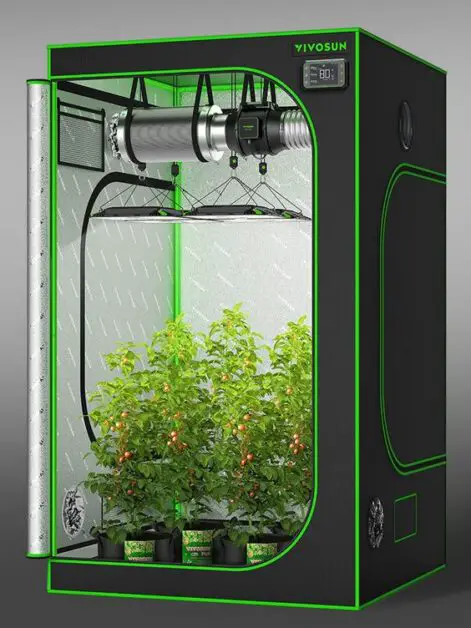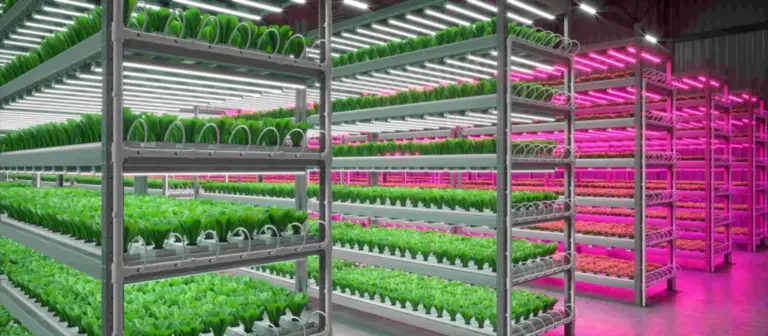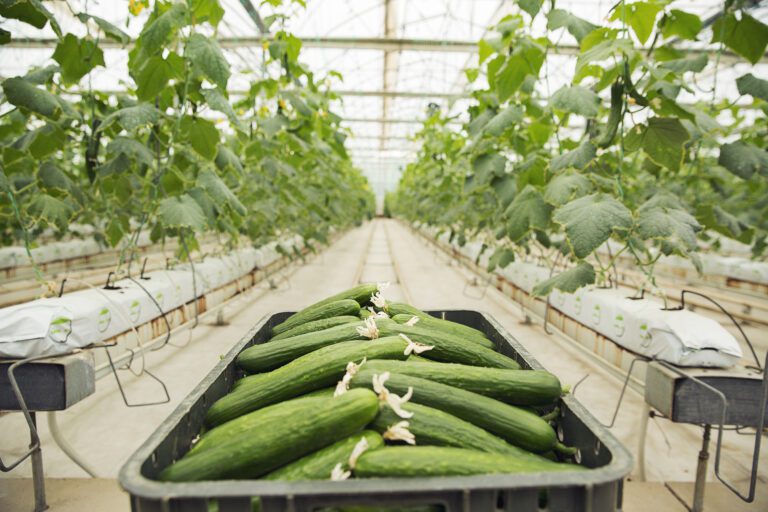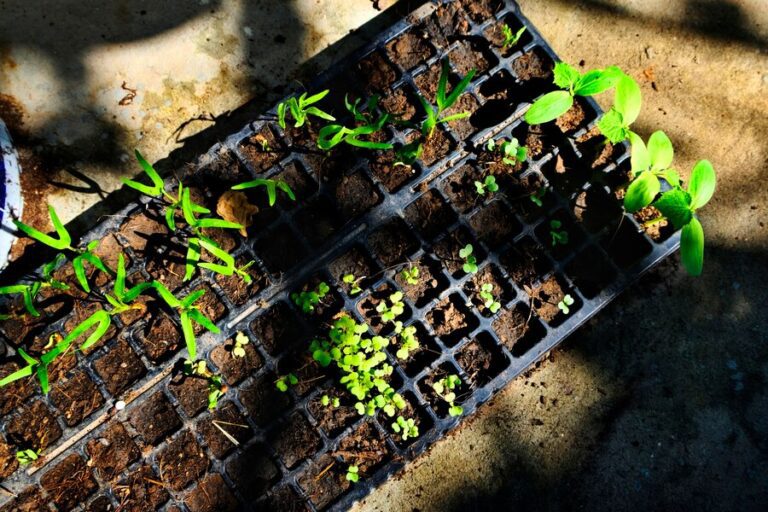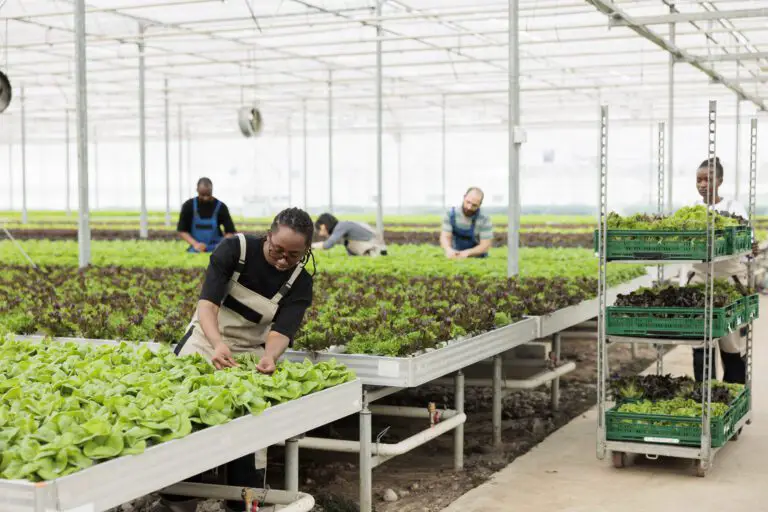How to Choose the Ideal Hydroponic System for Coastal Locations
Table of Contents
Understanding the Coastal Environment: Familiarize yourself with the unique challenges and characteristics of coastal locations that can impact hydroponic systems.
Coastal environments offer a unique set of challenges and characteristics that can greatly impact hydroponic systems. Whether you are a seasoned gardener or a beginner enthusiast, it is essential to familiarize yourself with these factors in order to ensure the success of your hydroponic setup.
One of the key considerations when working in coastal areas is the salinity levels of the water or air. Salt content can vary widely in coastal regions, and this can have a significant impact on hydroponic plants. Certain crops are more tolerant of salt than others, so it is important to assess the salinity levels before selecting the appropriate hydroponic system. By understanding the specific conditions of your coastal location, you can ensure that your system can handle the challenges posed by salt.
Another factor to evaluate is the strength and frequency of wind and salt spray. Coastal areas are often exposed to strong winds, which can cause damage to both plants and infrastructure. Additionally, salt spray can settle on plants and hinder their growth. By taking into account these environmental factors, you can choose a hydroponic system that can withstand the turbulent conditions of coastal areas.
As you embark on your hydroponic journey in a coastal location, keep in mind that temperature fluctuations are a common occurrence. Coastal regions often experience drastic shifts in temperature, which can affect the health and growth of your plants. Selecting a hydroponic system that can endure these changes is crucial for maintaining a stable and favorable climate for your crops.
Understanding the unique challenges and characteristics of coastal environments is essential for successful hydroponic gardening. By assessing salinity levels, wind and salt spray, temperature fluctuations, and other factors, you can make informed decisions when it comes to selecting the right hydroponic system for your coastal location. Only through this understanding can you create an environment that supports the growth and well-being of your hydroponic plants.
| Challenges in Coastal Hydroponic Systems | Implications/Considerations |
|---|---|
| Variability in Salinity Levels | – Salinity levels can vary widely and impact hydroponic plants |
| Assessing Salinity for System Selection | – Crucial to assess salinity levels for selecting an appropriate hydroponic system |
| Wind and Salt Spray Damage | – Strong winds and salt spray in coastal areas can cause damage to plants and infrastructure |
| Choosing Resilient Hydroponic Systems | – Selecting a system that can withstand turbulent conditions is important |
| Temperature Fluctuations in Coastal Regions | – Coastal areas experience drastic temperature fluctuations that can affect plant health and growth |
| Selecting Systems for Endurance | – Choosing a hydroponic system that can endure temperature changes is crucial |
| Understanding Coastal Challenges | – Understanding unique challenges of coastal environments is essential for successful hydroponic gardening |
| Informed Decisions for System Selection | – Making informed decisions based on factors such as salinity, wind, salt spray, and temperature fluctuations supports plant growth |
This table provides a concise overview of considerations for addressing challenges in coastal environments when establishing hydroponic systems, emphasizing the importance of system selection and understanding unique coastal challenges.

Assessing the Salinity Levels: Determine the salinity levels of the coastal water or air to choose a hydroponic system that can handle the specific conditions.
Assessing the salinity levels in coastal environments is essential when choosing a hydroponic system that can thrive under specific conditions. The salinity of the coastal water or air can significantly impact the success of your hydroponic plants.
High levels of salinity can be detrimental to plant growth as it can lead to osmotic stress, affecting water and nutrient uptake. Therefore, it is crucial to determine the salinity levels accurately before setting up your hydroponic system.
To assess the salinity, you can conduct water or air testing using a salinity meter or a hydrometer specifically designed for this purpose. These tools will provide precise measurements and insights into the salt content, helping you make informed decisions about the appropriate hydroponic system for your coastal location.
Considering the specific salinity levels will allow you to choose a hydroponic system that can effectively manage the salt content and ensure optimal plant health. By understanding the salinity levels, you can avoid potential setbacks and cultivate thriving hydroponic plants in coastal environments.
• Conduct water or air testing using a salinity meter or hydrometer
• Precise measurements will provide insights into salt content
• Determine appropriate hydroponic system for coastal location
• Choose a system that can effectively manage salt content
• Ensure optimal plant health in coastal environments

Evaluating the Wind and Salt Spray: Consider the strength and frequency of wind and salt spray in coastal areas, as these factors can affect the growth and health of your hydroponic plants.
When establishing a hydroponic system in a coastal location, it is crucial to evaluate the strength and frequency of wind and salt spray. These factors can have a significant impact on the growth and health of your hydroponic plants. Strong winds can cause damage to the plants by breaking stems or dislodging them from their growing medium. Salt spray, on the other hand, can accumulate on the leaves and roots, leading to increased salinity levels and potential damage.
Coastal areas are known for their harsh and unpredictable weather conditions, with gusty winds and salt-laden air being common occurrences. The strength of the wind is important to consider, as excessive force can cause physical stress on the plants, hindering their growth and overall development. Furthermore, the salt content in the air can have detrimental effects on plant health by interfering with their ability to take up water and nutrients. Therefore, it is crucial to choose a hydroponic system that can withstand these environmental challenges and protect your plants from wind damage and salt accumulation.
In conclusion, evaluating the strength and frequency of wind and salt spray in coastal areas is an essential step when establishing a hydroponic system. By selecting a system that can withstand these conditions, you can ensure the optimal growth and health of your plants. Stay tuned for the next section, where we will analyze the temperature fluctuations commonly experienced in coastal regions and their impact on hydroponic systems.
• Strong winds can break stems or dislodge plants from their growing medium
• Salt spray can accumulate on leaves and roots, increasing salinity levels and potentially damaging plants
• Coastal areas have harsh weather conditions with gusty winds and salt-laden air
• Excessive wind force can hinder plant growth and development
• Salt content in the air interferes with plant’s ability to take up water and nutrients
• Choose a hydroponic system that can withstand wind damage and protect plants from salt accumulation
• Evaluating wind strength and frequency is crucial for optimal plant growth in coastal areas.

Analyzing the Temperature Fluctuations: Coastal regions often experience temperature fluctuations, so it’s crucial to select a hydroponic system that can withstand these changes.
Coastal regions are known for their unique climate, characterized by frequent temperature fluctuations. These changes can pose a significant challenge when it comes to selecting a suitable hydroponic system for coastal gardening. The fluctuating temperatures can impact the growth and health of your plants, making it crucial to choose a system that can withstand these variations.
One important consideration when analyzing temperature fluctuations is the potential for extreme highs and lows. Coastal areas are often prone to drastic temperature changes, which can take a toll on plants. It is essential to select a hydroponic system that offers temperature control features, such as adjustable ventilation or cooling mechanisms, to ensure optimal growing conditions for your crops.
Moreover, the ability to monitor and regulate the temperature within your hydroponic system is vital in coastal environments. Investing in a system that comes equipped with temperature sensors and automated controls can help you maintain a stable and favorable environment for your plants, even in the face of unpredictable temperature fluctuations. This will ultimately promote healthy growth and yield successful harvests, regardless of the coastal climate’s challenges.
| Managing Temperature Fluctuations in Coastal Hydroponic Systems | Implications/Considerations |
|---|---|
| Frequent Temperature Fluctuations in Coastal Regions | – Coastal areas are known for their frequent temperature changes |
| Impact on Plant Growth | – Temperature changes can impact the growth and health of hydroponic plants |
| Selecting Resilient Hydroponic System | – Crucial to choose a system that can withstand temperature variations |
| Potential for Extreme Highs and Lows | – Consider the potential for extreme highs and lows in coastal areas |
| Adjustable Ventilation or Cooling Mechanisms | – Look for a hydroponic system with adjustable ventilation or cooling mechanisms to control temperatures |
| Investing in Temperature Control Features | – Invest in a system with temperature sensors and automated controls for effective temperature regulation within the hydroponic setup |
This table provides a concise overview of the considerations for managing temperature fluctuations in hydroponic systems in coastal regions, emphasizing the need for resilient systems and features that can address temperature variations effectively.
Researching Plant Varieties: Identify the plant varieties that thrive in coastal environments, as this will help you choose a hydroponic system that supports their specific needs.
When it comes to hydroponic systems in coastal environments, it is crucial to select plant varieties that can thrive in these unique conditions. Coastal areas are known for their high salt content in the air and water, as well as the potential for strong winds and salt spray. Therefore, it is important to choose plants that are well-suited to handle the challenges posed by these factors.
One type of plant that tends to thrive in coastal environments is the salt-tolerant variety. These plants have adapted to be able to withstand high levels of salt in the air and water, making them ideal candidates for hydroponic systems in coastal areas. Some examples of salt-tolerant plants include spinach, kale, and Swiss chard. These leafy greens not only tolerate the salt but also provide a nutrient-rich addition to your hydroponic garden.
In addition to salt-tolerant varieties, there are also other plant species that are known for their ability to withstand the specific challenges of coastal environments. For example, certain types of succulents, such as aloe vera and jade plants, are well-suited to grow in coastal areas due to their ability to retain water and withstand dry conditions. Similarly, plants like beach morning glory, seashore paspalum, and beach sunflower have adapted to the unique conditions found along coastal regions.
By identifying plant varieties that thrive in coastal environments, you can ensure that your hydroponic system is equipped to support their specific needs. This will not only enhance the success of your hydroponic garden but also provide you with a bountiful harvest of healthy and vibrant plants.
• Salt-tolerant plants, such as spinach, kale, and Swiss chard, are ideal for hydroponic systems in coastal areas due to their ability to withstand high levels of salt in the air and water.
• Succulents like aloe vera and jade plants are well-suited for coastal environments as they can retain water and tolerate dry conditions.
• Other plant species like beach morning glory, seashore paspalum, and beach sunflower have adapted to the unique challenges of coastal regions.
• Identifying plant varieties that thrive in coastal environments will ensure that your hydroponic system can provide the necessary support for their specific needs.
• Growing these plant varieties will lead to a successful hydroponic garden with healthy and vibrant plants.

Determining Water Availability: Assess the water availability in coastal locations, considering factors such as rainfall, access to fresh water sources, and potential for water scarcity.
When assessing the water availability in coastal locations for your hydroponic system, it is important to consider various factors. Firstly, examine the average rainfall in the area. Coastal regions experience different precipitation patterns compared to inland areas, and understanding local rainfall levels will help determine how much water can be harvested naturally for your hydroponic setup.
In addition to rainfall, consider the access to fresh water sources in the coastal location. While some areas may have readily available freshwater rivers or lakes, others may rely on underground aquifers or desalination plants for their water supply. Access to a reliable and sustainable source of freshwater is crucial for the long-term success of your hydroponic system.
Furthermore, it is essential to evaluate the potential for water scarcity in coastal areas. Factors such as population density, agricultural demands, and ecological considerations can contribute to water scarcity. Understanding the local water management practices and potential challenges will help you implement effective water conservation strategies in your hydroponic system. By considering these factors, you can ensure a sustainable and efficient water supply for your coastal hydroponic garden.
| Evaluating Water Availability and Conservation Strategies in Coastal Hydroponic Systems | Implications/Considerations |
|---|---|
| Examine Average Rainfall | – Assess natural water availability by examining average rainfall in the coastal area |
| Access to Fresh Water Sources | – Consider availability of fresh water from rivers, lakes, aquifers, or desalination plants |
| Evaluate Potential for Water Scarcity | – Assess potential water scarcity based on factors like population density, agricultural demands, and ecological considerations |
| Understand Local Water Management Practices | – Gain insights into local water management practices and potential challenges |
| Implement Water Conservation Strategies | – Develop and implement effective water conservation strategies in the hydroponic system |
This table provides a concise overview of the key considerations for evaluating water availability in coastal areas for hydroponic systems and emphasizes the importance of understanding local water management practices and implementing conservation strategies.
Considering Space Constraints: Take into account the available space for setting up your hydroponic system, considering the limitations imposed by coastal locations.
When considering the space constraints of coastal locations for setting up a hydroponic system, there are several limitations to keep in mind. Coastal areas are often characterized by limited land availability due to factors such as erosion, high tides, or protected habitats. These constraints can impact where and how you can set up your hydroponic system.
One approach to address space limitations is vertical farming. By utilizing vertical space, you can maximize your growing area without spreading horizontally. Vertical farming systems, such as vertical towers or racks, allow you to grow plants in multiple layers, maximizing space efficiency. Additionally, utilizing hanging baskets or suspended systems can help make use of overhead space, further maximizing your growing area. By considering these space-saving techniques, you can overcome the constraints imposed by coastal locations and still enjoy a productive hydroponic setup.
Furthermore, it is crucial to consider the proximity of your hydroponic system to other coastal elements. For example, if your setup is too close to the shoreline, it may be exposed to saltwater intrusion during high tides or storms. This can be detrimental to the health of your plants and the overall functionality of your hydroponic system. Therefore, it is essential to find a suitable location that balances space constraints with protection from the coastal elements, ensuring optimal conditions for successful hydroponic gardening.
– Vertical farming systems, such as vertical towers or racks, can maximize growing area without spreading horizontally
– Utilizing hanging baskets or suspended systems can make use of overhead space
– Proximity to the shoreline should be considered to avoid saltwater intrusion during high tides or storms
– Finding a suitable location that balances space constraints with protection from coastal elements is crucial for successful hydroponic gardening.
Salinity level in the coastal environment
Understanding the coastal environment is essential when it comes to setting up a successful hydroponic system. Coastal locations present unique challenges and characteristics that can greatly impact the growth and health of your plants. Factors such as salt levels in the water or air, wind strength and frequency, temperature fluctuations, and water availability all need to be carefully considered.
One key aspect to assess is the salinity levels in the coastal water or air. High salt content can be detrimental to plants and can cause nutrient imbalances in hydroponic systems. By determining the salinity levels, you can choose a hydroponic system that can effectively handle these specific conditions and ensure the optimal growth of your crops.
The strength and frequency of wind and salt spray in coastal areas is another crucial factor to evaluate. Strong winds can damage or uproot plants, while salt spray can lead to accumulation of salt on the plant surfaces, inhibiting their ability to absorb nutrients. Understanding the impact of these factors will allow you to select plant varieties and design a hydroponic system that can withstand these coastal challenges.
• Salinity levels in coastal water or air should be assessed to determine their impact on plant growth.
• High salt content can cause nutrient imbalances in hydroponic systems and harm plants.
• Choosing a hydroponic system that can handle specific salinity conditions is important for optimal crop growth.
• The strength and frequency of wind and salt spray in coastal areas need to be evaluated.
• Strong winds can damage or uproot plants, while salt spray inhibits nutrient absorption.
• Selecting appropriate plant varieties and designing a resilient hydroponic system are key to overcoming these challenges.
Can I use any type of hydroponic system in a coastal environment?
No, you need to choose a hydroponic system that can handle the specific conditions of the coastal environment, such as high salinity levels and temperature fluctuations.
How can wind and salt spray affect hydroponic plants in coastal areas?
Strong winds and salt spray can damage the plants and hinder their growth and health in coastal areas.
Are there specific plant varieties that thrive in coastal environments?
Yes, certain plant varieties are better adapted to coastal environments and can thrive despite the challenges posed by salt spray and other coastal factors.
How can I assess the water availability in coastal locations for my hydroponic system?
Consider factors such as rainfall, access to fresh water sources, and the potential for water scarcity when determining the water availability in coastal locations.
What are the space constraints to consider when setting up a hydroponic system in a coastal location?
The available space for setting up your hydroponic system may be limited in coastal areas, so it’s important to consider these constraints when planning your setup.

Beck Wakeford is a dedicated writer at SouthElMonteHydroponics, with a fervent enthusiasm for agriculture and technological innovation. Armed with a degree in Agricultural Engineering from a leading university, Beck specializes in hydroponic systems design, automation, and optimization. Their passion for merging traditional farming with cutting-edge technology drives them to explore novel solutions for sustainable food production. Beck’s expertise and keen interest in the intersection of engineering and agriculture make them a valuable asset in the quest for efficient and eco-friendly farming practices. Through their writing, Beck aims to inspire others to embrace the potential of hydroponics in shaping a more sustainable future.

